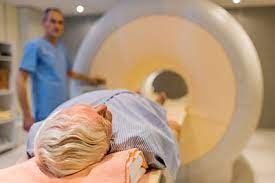Sclerosing epithelioid fibrosarcoma, more commonly referred to as SEF, is an extremely rare form of cancer that manifests itself in the bones and soft tissues. It develops most frequently in the limbs, legs, head, and neck of the host, but it appears anywhere on the body. There is a network of strands and layers formed by the cells that are responsible for this kind of cancer. Sclerosing Epithelioid Fibrosarcoma is an extremely rare kind of low-grade disease, with distinct histological and immunohistochemical characteristics. It is a challenging condition to diagnose.
On occasion, this tumor is mistaken for a rare kind of sarcoma known as fibromyxoid sarcoma due to its similar appearance under the microscope. In 1995, sclerosing epithelioid fibrosarcoma was originally identified as a distinct tumor. It is an uncommon but distinct type of fibrosarcoma that appears as a deep-seated tumor on the limbs and neck, as well as next to the fascia or peritoneum, the trunk, and the spine.
In the presence of fibrosarcoma, the body’s fibroblasts proliferate uncontrollably. This generates fibrous tissue in unwanted places. Fibrosarcoma spreads all over the body, just like other types of cancer. Every type of Fibrosarcoma belongs to the family of sarcoma. Some other types of sarcoma comprise osteosarcoma, which affects the bones, and rhabdomyosarcoma, which affects the muscles.
Sclerosing Epithelioid Fibrosarcoma Survival Rate
Epithelioid Sclerosing Fibrosarcoma is an unusual form of cancer that spreads to various parts of the body. The tumor’s prognosis depends on a variety of circumstances, including the tumor’s size, stage, location, age, and overall health of the patient. In general, with early detection, small-sized cancerous tumors possess a better prognosis than larger ones.
The primary factors that determine a patient’s prognosis are the magnitude of the tumor, its location, and the presence of metastatic disease. The prognosis for men with the tumor is worse than for women, while there are mostly no differences in prognostic factors based on gender. In general, the outlook for this type of unusual cancer is not good. For 4 years, only 65% of people survive this severe illness.
The prognosis for Sclerosing Epithelioid Fibrosarcoma is determined by the location of the tumor in the body. There are chances of recurrence of the malignancies in at least half of the patients. Regular follow consultations with the doctor are critical if the Sclerosing Epithelioid Fibrosarcoma returns or spreads to other places of the body following therapy.
Sclerosing Epithelioid Fibrosarcoma Symptoms
Fibrosarcoma is hard to tell apart from other types of sarcoma based on its symptoms alone. This is because it possesses many of the same symptoms as other types of sarcoma.
This type of sarcoma is not easily diagnosed and its symptoms do not appear instantly. The following are some of the symptoms of Fibrosarcoma:
- Swelling in various regions of the body, particularly the limbs, is quite painful.
- A cough or shortness of breath.
- Stool with a dark color.
- Vomiting with blood.
- Vaginal bleeding that is not regular.
- Abdominal discomfort.
- Continuous discomfort in the region of the tumor.
- Swelling surrounds the bone, which typically does not appear until the tumor becomes large.
- Numbness in sections of the body as a result of the tumor pressing on nerves.
- Discomfort and visible tumor expansion.
Sclerosing Epithelioid Fibrosarcoma Treatment
Some possible ways to treat Sclerosing Epithelioid Fibrosarcoma are:
- Most of the time, SEF is treated with surgery that removes the whole tumor.
- Embolization is also used for the treatment that provides temporary relief from symptoms while also reducing blood loss during surgery.
- According to the findings of the healthcare provider’s examination, the tumor cells are eradicated by the use of radiation therapy, chemotherapy, or both.
- It is critical to follow a strict post-operative regimen and maintain a reasonable level of exercise while the surgery site is healing.
- Regular check-ups and screenings are also necessary for the proper treatment.
- High-dose radiation for non-removable cancers.
- Immunotherapy is also used to treat this type of Fibrosarcoma.
Thus, Sclerosing Epithelioid Fibrosarcoma tumors are typically treated by performing a wide local excision, amputating an involved extremity, undergoing radiotherapy, and/or undergoing chemotherapy. The specific treatment plan is determined by the accessibility of the tumor during surgery and its spread to other tissues. However, controlling the tumor’s local detrimental consequences is frequently the primary focus of these therapy regimens.
 Health & Care Information
Health & Care Information 


